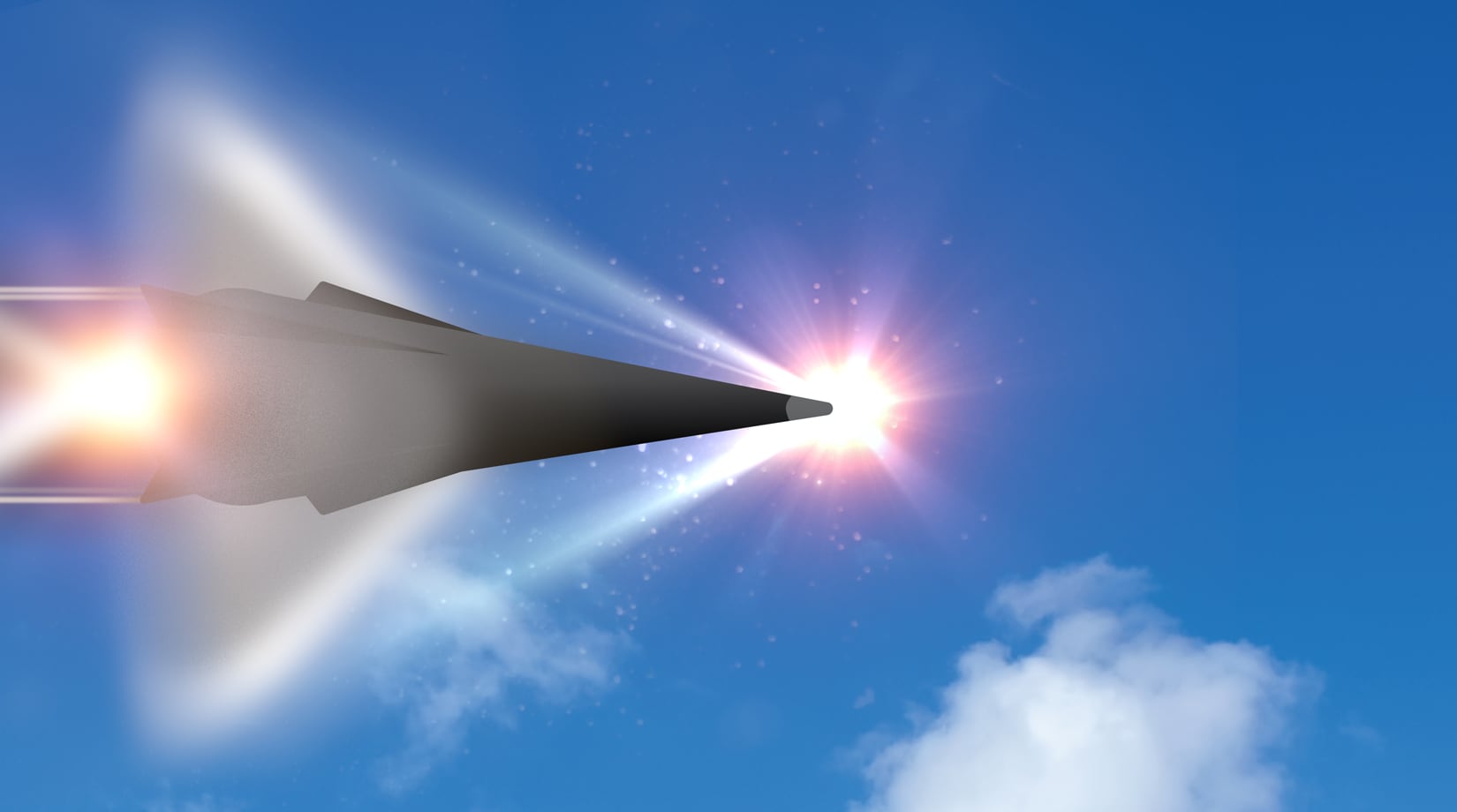Hypersonic weapons have grabbed the attention of the defense industry, with Pentagon Under Secretary of Defense for Research and Engineering Michael Griffin calling hypersonic capabilities “the highest technical priority.”
With Russia recently announcing its Avangard hypersonic glide vehicle operational, we understand the challenge as the U.S. races to field these advanced hypersonic missile systems. Russia claims Avangard can travel at 27 times the speed of sound and strike “like a fireball,” while China contends its Starry Sky-2 hypersonic glide vehicle can evade existing U.S. missile defense systems.
And it’s not just Russia and China. Technology can proliferate. In the past, other countries have demonstrated their ability to acquire technology and reverse engineer it. Hypersonic weapons are one of the most prolific emerging threats, and the United States must remain ahead of the game in advanced hypersonic weapons development.
During my time at the Defense Advanced Research Projects Agency and most recently at Raytheon, I witnessed some of the great things that can happen when government and industry partner to develop advanced weapons for the good of our country — and we’re doing it again with hypersonics. U.S. lawmakers last year passed a law requiring that hypersonic weapons be operational by 2020; the Department of Defense’s proposed budget through fiscal 2024 calls for upward of $10.5 billion in hypersonic weapons development. Industry leaders are joining forces to tackle the technological challenges involved with hypersonic flight head on.
As to our involvement, Raytheon recently won a contract to develop the tactical boost glide weapon for DARPA and the U.S. Air Force. We signed a teaming agreement with Northrop Grumman to co-develop scramjet-powered hypersonic missiles, which is on track for its first test flight next year. We’re also involved in counter-hypersonics.
RELATED

In the world of hypersonic weapons, speed and agility are everything. While flying a vehicle at speeds above Mach 5 isn’t new, designing systems to sustain flight and maneuver at those speeds creates unique challenges that need to be solved to ensure success.
There are two main design options: tactical boost glide and scramjet systems. In a boost glide system, a rocket accelerates its payload to high speeds. The payload then separates from the rocket and glides unpowered to its destination.
Scramjet technology uses a booster to reach cruising speeds. The scramjet engine is designed to compress the high-velocity, incoming air before combustion. This technology, also called “air breathing,” renders a highly efficient engine at hypersonic speeds.
The speed and altitude at which these vehicles fly significantly challenge an adversary’s ability to detect, track, target and engage. This not only increases the effectiveness of the weapons themselves, but it acts as a force multiplier across the battlespace. Additionally, the range of these weapons allows our fourth-generation platforms and surface Navy to operate at safe distances.

Leaders in the defense industry have overcome many of the technical challenges associated with hypersonic flight. We’ve figured out how to manage extreme heat to ensure electronics and payloads are protected. We’re developing new materials and manufacturing processes to withstand the extreme environment of such high-speed velocities. We’re creating new, aerodynamic shapes for these highly technical vehicles — shapes never before conceived in the hypersonics realm. We’re also tackling the kill chain by leveraging existing capabilities. Because hypersonic vehicles will travel farther, faster and with more agility, they will require new approaches for targeting and mission execution.
I’m confident the U.S. will retake our preeminent role in leading advanced capabilities. I believe we will solve the challenges associated with hypersonic flight by leveraging the knowledge and abilities of the thousands of engineers and scientists that form the backbone of the U.S. defense industry.
More still needs to be done. More sustained investment and transition opportunities are needed. Congress, thought leaders and the public need to get behind the funding and infrastructure required to make this happen. Industry must continue to work together. Hypersonic systems are one of the next evolutions in warfare, and we have to find a way to counter these advanced systems, and it must be done quickly. As stated by DoD leaders, it’s a national imperative.
Tom Bussing is the vice president of advanced missile systems at Raytheon Missile Systems.








